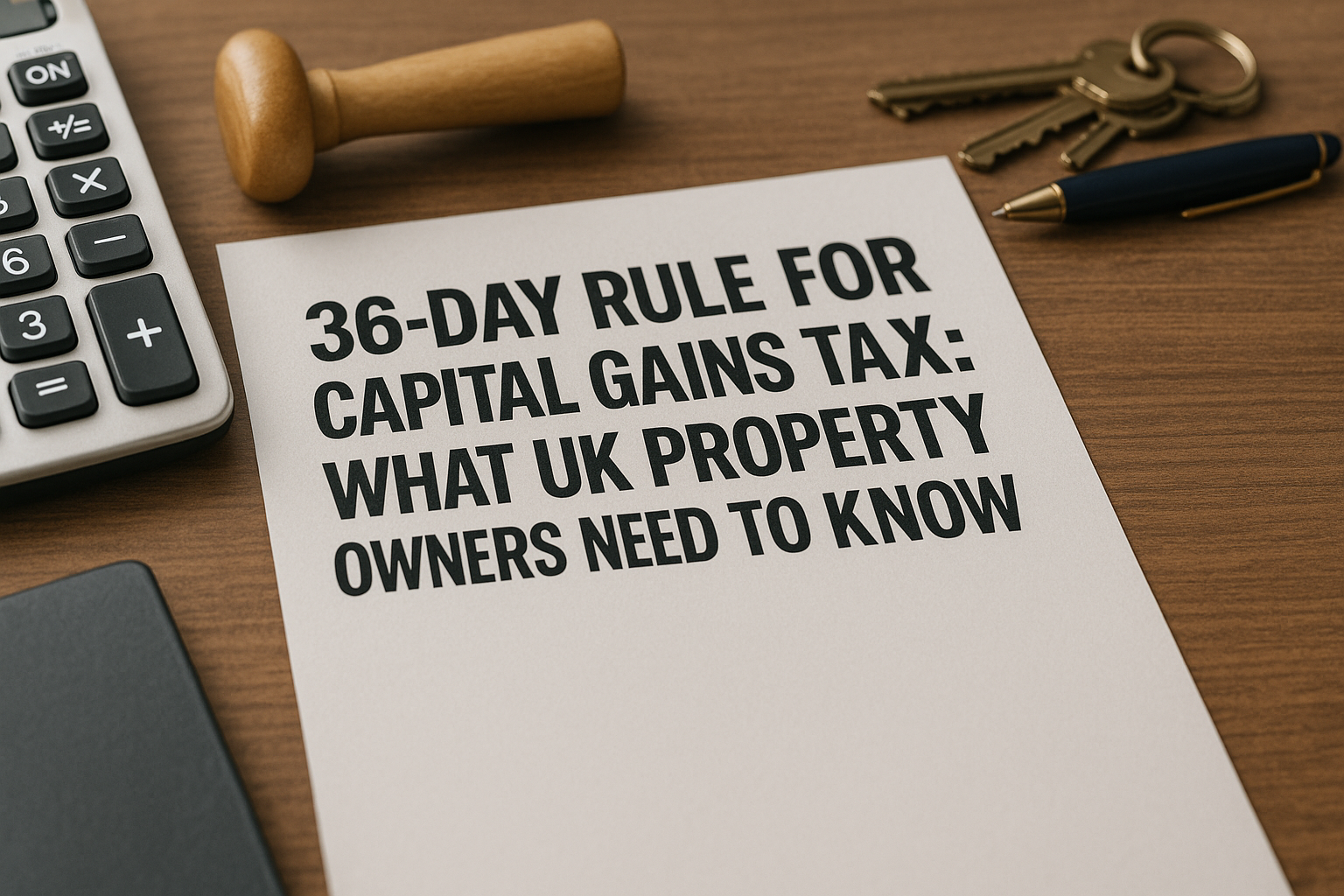36-Month Rule for Capital Gains Tax: What UK Property Owners Need to Know
When you sell a property that’s not your main home, you must report any gain to HMRC and pay Capital Gains Tax (CGT). The 36-Month Rule sets a tight deadline for reporting and payment on UK residential property disposals.
- Reporting Deadline
You must file a UK Property Disposal Return within 36 days of completion, not 36 months. This return replaces the paper self-assessment for that gain. Missing this deadline can incur penalties and interest, so mark your calendar on completion day.
- Payment Timeline
Any CGT owed is payable at the same 36-day mark—long before your normal January 31 self-assessment payment. This accelerates cashflow management, requiring you to have funds ready immediately after sale rather than waiting until the following tax year.
- Calculating the Gain
Compute your gain by deducting allowable costs—purchase price, improvement expenses, and selling fees—from the sale proceeds. Then apply any reliefs (e.g., Private Residence Relief) before calculating CGT at 18% or 28%, depending on your taxable income band.
- Reliefs and Exemptions
If the property was your main residence for part of the ownership period, you may claim Private Residence Relief to reduce the gain. Lettings Relief may apply if you rented out the property, but only up to £40,000. Always verify eligibility before reporting.
- Record-Keeping Requirements
Keep detailed records of purchase and sale documents, improvement invoices, and letting periods for at least five years after filing. HMRC may request evidence to support your calculations. Good record-keeping helps avoid queries and penalties.
The 36-Month Rule tightens deadlines for reporting and paying CGT on UK residential property gains. By understanding the timetable, calculating gains accurately, claiming available reliefs, and keeping thorough records, you’ll meet HMRC requirements smoothly and avoid costly mistakes.









